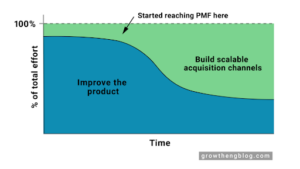Growing companies will have a data stack at some point. So instead of asking should you have a data stack, the real question is when is the right time to set one up?
The most common answer is as soon as you have two or more sources of data. This usually happens when you become a seed-stage company, since you’re looking to figure out product-market fit and how to go to market.
The more nuanced answer is when you reach one of these scenarios:
You have two or more data sources
Once you’re working with two or more data sources, having a data stack makes it easy to combine them. This is mainly due to one of the components of a data stack: the data warehouse.
A data warehouse is incredibly powerful when you’re working with multiple data sets because it stores all your data in a centralized location. Instead of looking at data in the platform or system they originate in, you can now combine data from multiple systems to find rich insights and answer complex questions.
Without a warehouse, you can only look at how your ad channels are performing separately. For example, you’ll look at the performance of your Facebook ads and Google ads. With a data warehouse, you’re able to combine your Facebook and Google data with your product and user data. You can compare how the users you acquired through Facebook compare to Google. How are they different when it comes to product adoption and retention? From there, you’ll know which ad channel is most effective in bringing the types of customers you want and where to put your money to generate the highest ROI.
You’re struggling to work with data directly in your BI tool
Yes, you can hook up your database directly to a BI tool. When you only have one data source and not many tables, or when you’re tracking metrics that are simple counts, this will meet your needs. But once you have two or more data sources and you have questions that span across them, you need additional tools to pull all that data together and organize it for efficient analysis.
Modern Treasury experienced the limitations of loading data directly into their BI tool. They couldn’t join their CRM and payments data with the rest of their data. “We were unable to answer questions that required data from different places. The alternative [to a modern data stack] would be writing these runtime queries in our BI tool, which is expensive, and also messy to do, because they’re hard to build upon,” described Matt Marcus, Co-Founder and Chief Product Officer at Modern Treasury.
You’re going to great lengths to answer questions
If you’re spending a lot of time and work to pull data and analyze it, having a data stack makes this more efficient. Instead of manually exporting CSVs and creating pivot tables to join data, use an extract and load tool to push all your data into a data warehouse so you can work with all your data in one place.
Another example where a data stack makes you more efficient is regular reporting. If there’s a weekly report that’s manually put together by someone, you can automate this with a data stack and business intelligence (BI) tool. Now that report will be refreshed automatically, and it frees you up to spend more time analyzing the data and asking questions.
If you relate to one or more of these scenarios, having a data stack has changed from being a nice-to-have to a must-have. You’re at the point where a data stack will make a significant impact on how your team accesses and works with data.
While setting up a modern data stack used to take weeks and at least one engineer, there are now options that require a fraction of the time and resources. Mozart Data provides an out-of-the-box modern data stack that you can set up in an hour and without any engineering. Contact us to schedule a demo.


